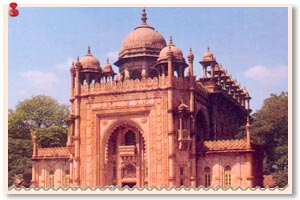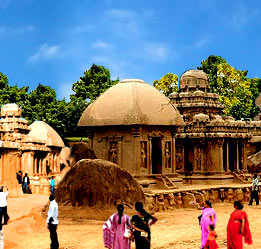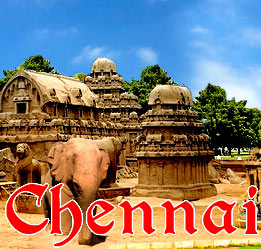 The Government Museum of Chennai is one of the most popular sightseeing pots in the city. Though initially it was set up in an edifice on the College Road, Nungambakkam, in 1851, later on, in 1854, it was shifted to the present locale in Egmore. Today, it proudly stands as the second oldest museum-after the Indian Museum of Kolkata which was set up in 1814-and is also one of the leading museums in South Asia. It is mainly affluent in archaeological and numismatic collections and also has a vast collection of Roman antiquities, outside of Europe. Some of the edifices in the campus of the museum are over 100 years old. The Museum grounds comprises of six buildings and 46 galleries, covering the total area of about 16.25 acres.
The Government Museum of Chennai is one of the most popular sightseeing pots in the city. Though initially it was set up in an edifice on the College Road, Nungambakkam, in 1851, later on, in 1854, it was shifted to the present locale in Egmore. Today, it proudly stands as the second oldest museum-after the Indian Museum of Kolkata which was set up in 1814-and is also one of the leading museums in South Asia. It is mainly affluent in archaeological and numismatic collections and also has a vast collection of Roman antiquities, outside of Europe. Some of the edifices in the campus of the museum are over 100 years old. The Museum grounds comprises of six buildings and 46 galleries, covering the total area of about 16.25 acres.The items displayed in the museum include a huge array of artefacts, palm-leaf manuscripts and other objects that have been segmented into various sections including geology, archaeology, zoology, anthropology, numismatics, botany and sculpture. It has four main galleries including the Hindu Sculpture Gallery, Bronze Gallery, Amravathi Gallery and the National Art Gallery. There is a Children's Museum which is a very special segment dedicated to children. It has three main sub-divisions namely, civilization gallery, kids corner and the transportation gallery. The Government Museum is also selected as Manuscript Conservation Centre (MCC) under the National Mission for Manuscripts, founded in 2003.
Amidst all, the huge Museum Theatre is one of the most remarkable buildings, structured in the Italianate style after being influenced by the Classical architectural design. This theatre was constructed by the British in the late 19th century, when this architectural pattern was not even famous in England. This building has a high pedestal which is entered through a big flight of stairs. The walls and the pillars of the museum are intricately adorned with floral and geometrical motifs. The huge main hall of the Museum Theatre was built for the theatrical performances and comprises of more than 600 seats and a spacious stage. During the British time, it was used for the performances of English plays preferred by the elite class of the British society; the hall has witnessed various plays including those of Shakespeare's. At present, this theatre is used for academic and cultural programs such as art workshops, speeches and seminars.
The National Art Gallery of the museum displays the traditional paintings, Indian miniature artworks, paintings of Thanjavur and other antique and traditional paintings. On the other hand, the Contemporary Art Gallery includes the prehistoric British paintings as well as contemporary paintings. The main items of this museum which are enthralling and captivating are the world notable Amravati figures, Thanjavur armoury, South Indian bronzes, copper plates, the inscriptions engraved on the stones, artefacts from the Megaliths of Adichanallur, the Dowleshwaram hoard of gold coins of Raja Raja I and Kulothunga I. Apart from these, the Bruce Foote Collection of prehistoric stone equipments, and many other artefacts from Arikamedu, the colossal skeleton of the whale which was discovered on a seashore near Mangalore and the delicate crystal reliquaries from the Bhattiprolu Stupa are put on display here. No wonder the museum holds great significance and charm amongst its visitors.





